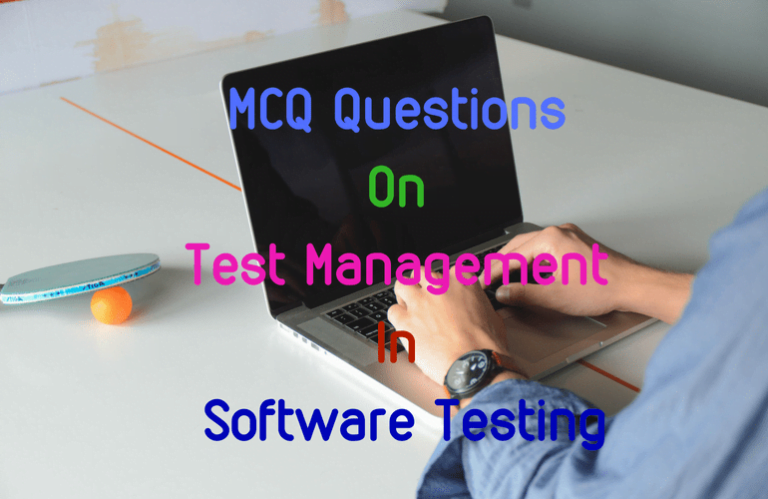1. Which of the following is a possible benefit of independent testing?
A) Independent testers see other and different defects and are unbiased.
B) Independent testers do not need extra education and training.
C) Independent testers reduce the bottleneck in the incident management process.
D) Independent testers can work longer than developers.
2. Which of the following are the drawbacks of independent testing?
i) An independent tester cannot verify assumptions people made during the specification and implementation of the system.
ii) Independent testers are isolated from the development team.
iii) Independent testers may be seen as a bottleneck or blamed for delays in release.
A) i and ii only
B) ii and iii only
C) i and iii only
D) All i, ii and iii
3. Which of the following are the typical tasks that should be performed by the test leader?
i) Prepare and acquire test data
ii) Write or review a test strategy
iii) Write test summary reports based on the information gathered during testing.
iv) Review and contribute to test plans
A) i and ii only
B) ii and iii only
C) iii and iv only
D) i and iv only
4. State whether the following statements about different test positions are True or False.
i) The test manager plans testing activities and chooses the tools and controls to be used.
ii) The test manager plans organizes and controls the testing activities while the tester specifies and executes tests.
A) False, False
B) True, False
C) False, True
D) True, True
5. Which of the following are the tasks performed by the typical tester?
i) Review tests developed by others
ii) Decide on the implementation of the test environment
iii) Prepare and acquire test data
A) i and ii only
B) ii and iii only
C) i and iii only
D) All i, ii and iii
6. Which of the following are typical entry criteria for testing?
i) Test data availability
ii) Testable code availability
iii) Costs
iv) Test tool readiness in the test environment.
A) i, ii and iii only
B) ii, iii and iv only
C) i, iii and iv only
D) i, ii and iv only
7. Which of the following are typical exit criteria for testing?
i) costs
ii) Schedules such as those based on time to market
iii) Test environment availability and readiness
iv) Estimates of defect density or reliability measures.
A) i, ii and iii only
B) ii, iii and iv only
C) i, iii and iv only
D) i, ii and iv only
8…. are used for risk-based testing, where testing is directed to areas of greatest risk.
A) Analytical approaches
B) Model-based approaches
C) Methodical approaches
D) Consultative approaches
9…. are used in stochastic testing using statistical information about failure rates or usage.
A) Analytical approaches
B) Model-based approaches
C) Methodical approaches
D) Consultative approaches
10……… are used on those in which test coverage is driven primarily by the advice and guidance of technology and/or business domain experts outside the test team.
A) Analytical approaches
B) Model-based approaches
C) Methodical approaches
D) Consultative approaches
11…. describes any guiding or corrective actions taken as a result of information and metrics gathered and reported.
A) Test control
B) Test Monitoring
C) Test Management
D) Configuration management
12…………….. is concerned with summarizing information about the testing endeavor.
A) Test Control
B) Test Monitoring
C) Test reporting
D) Configuration management
13. The purpose of… is to provide feedback and visibility about test activities.
A) Test control
B) Test Monitoring
C) Test reporting
D) Test management
14. The purpose of… is to establish and maintain the integrity of the products of the software or system through the project and product lifecycle.
A) Test control
B) Test Monitoring
C) Test Management
D) Configuration management
15. Which of the following risks does NOT include product risks in software testing?
A) Failure-prone software delivered
B) Software that does not perform its intended functions
C) Low quality of the design and coding
D) Poor data integrity and quality
16. Select the risks that fall under project risks.
i) Problems in defining the right requirements.
ii) Test environment was not ready on time
iii) Poor software characteristics
A) i and ii only
B) ii and iii only
C) i and iii only
D) All i, ii and iii
17. The details of the incident report include which of the following.
i) Date of issue, issuing organization, and author
ii) Expected and actual results
iii) Priority to fix
iv ) Conclusions, recommendations, and approvals
A) i, ii and iii only
B) ii, iii and iv only
C) i, iii and iv only
D) All i, ii, iii and iv
18. ……………. Provide developers and other parties with feedback about the problem to enable identification, isolation, and correction as necessary.
A) Incident report
B) Incident logging
C) Testing report
D) Risk report
19. In a risk-based approach, the risks identified may be used to
i) Determine the test techniques to be employed.
ii) Determine the extent of testing to be carried out.
iii) Prioritize testing in an attempt to find the critical defects as early as possible.
iv) Determine whether testing activities could be employed to reduce risk.
A) i, ii and iii only
B) ii, iii and iv only
C) i, iii and iv only
D) All i, ii, iii and iv
20. For testing, ……… may involve ensuring all items of testware are identified, version controlled, and tracked for changes, related to each other, and related to the development items so that traceability can be maintained throughout the test process.
A) Test control
B) Test Monitoring
C) Test Management
D) Configuration management
Answers:
1. A) Independent testers see other and different defects and are unbiased.
2. B) ii and iii only
3. B) ii and iii only
4. C) False, True
5. C) i and iii only
6. D) i, ii and iv only
7. D) i, ii and iv only
8. A) Analytical approaches
9. B) Model-based approaches
10. D) Consultative approaches
11. A) Test control
12. C) Test reporting
13. B) Test Monitoring
14. D) Configuration management
15. C) Low quality of the design and coding
16. A) i and ii only
17. D) All i, ii, iii and iv
18. A) Incident report
19. A) i, ii and iii only
20. D) Configuration management
Read Next: Top 20 MCQ Questions on Software Testing Tools
Pro Tips For our Readers:
Microsoft exam AZ-500, also known as “Microsoft Azure Security Technologies,” is a certification exam designed to validate the abilities and understanding of IT professionals in protecting Microsoft Azure environments. Several security-related topics are covered in this exam, including identity and access management, Azure platform security, data and application security, and network security.
The capacity to apply advanced security controls and threat prevention mechanisms within Azure is demonstrated by passing the AZ-500 test, making it a crucial certification for individuals responsible for safeguarding cloud systems and maintaining compliance with industry standards.
Passing the AZ-500 test demonstrates candidates’ knowledge of Azure security solutions, assisting enterprises in mitigating risks and maintaining a secure and resilient cloud infrastructure. ExamLabs.com is a website where you can find any exam paper.









